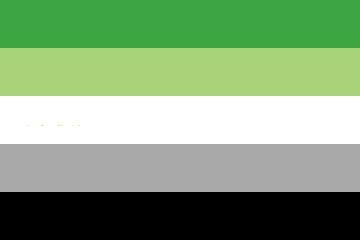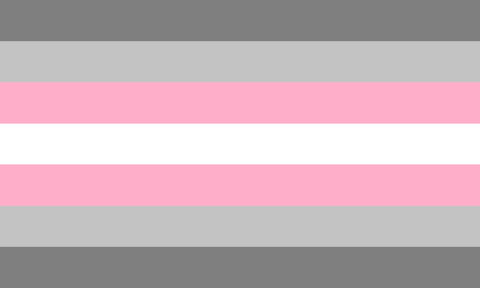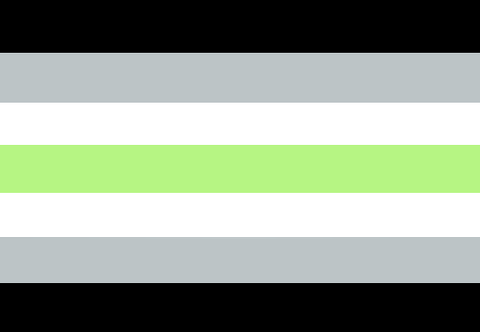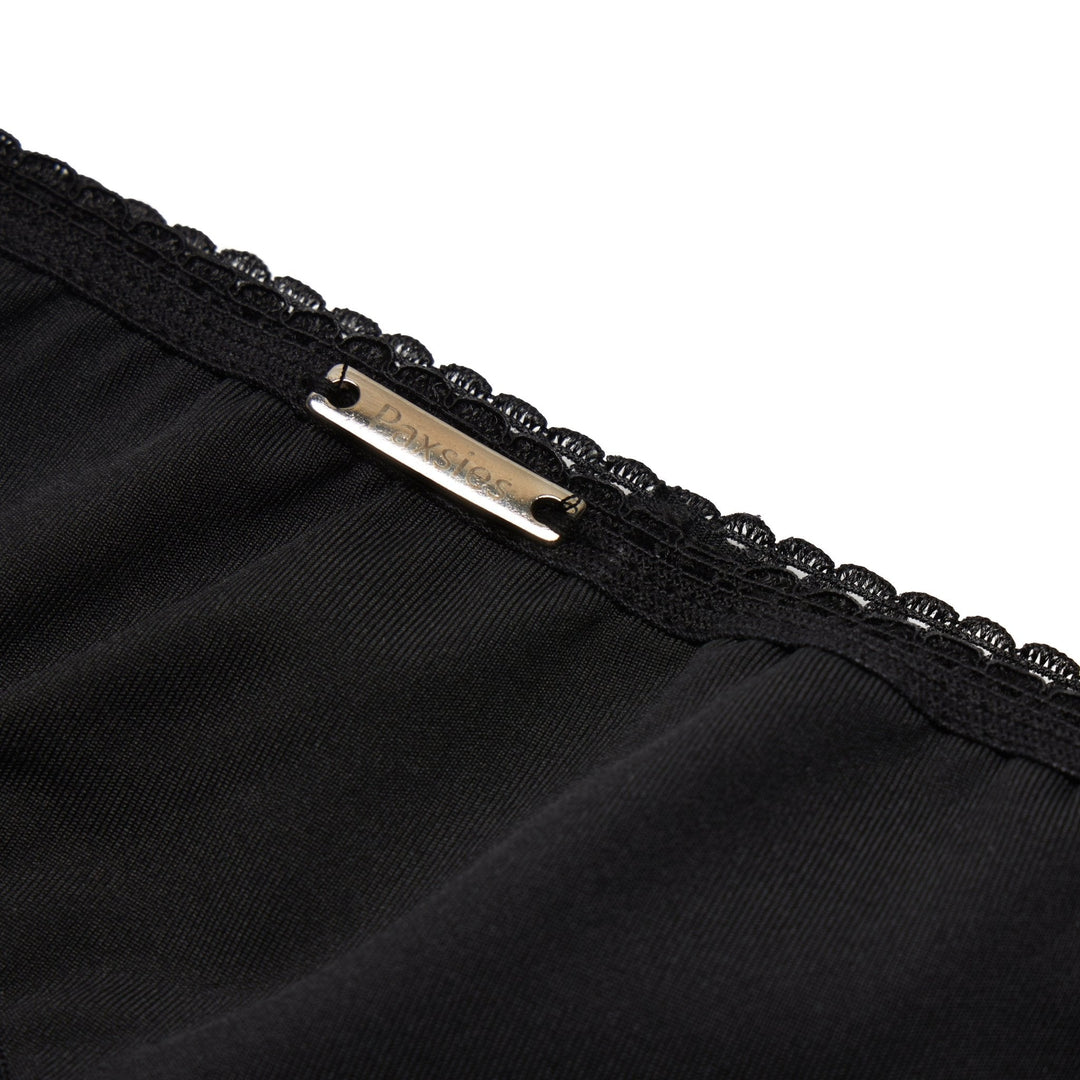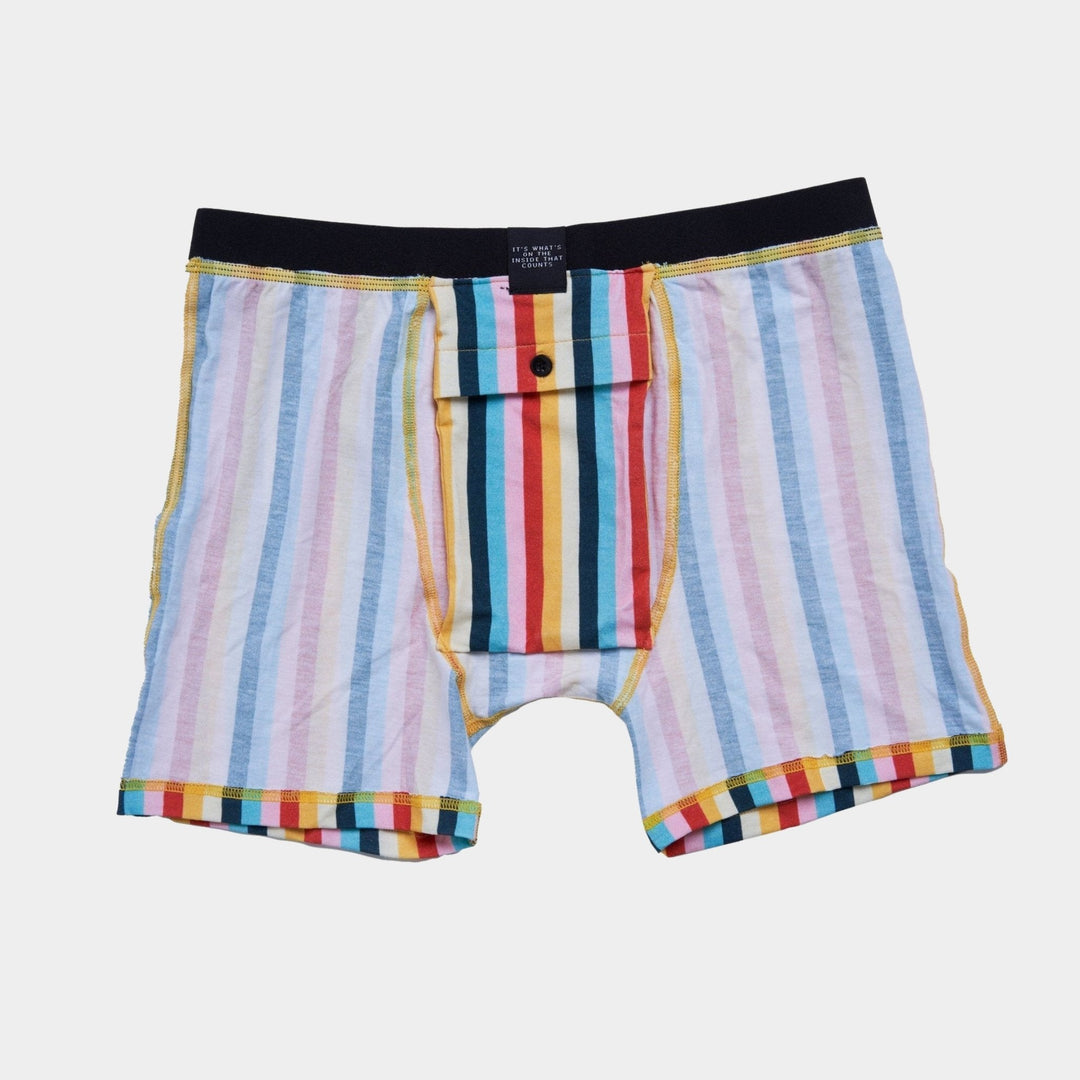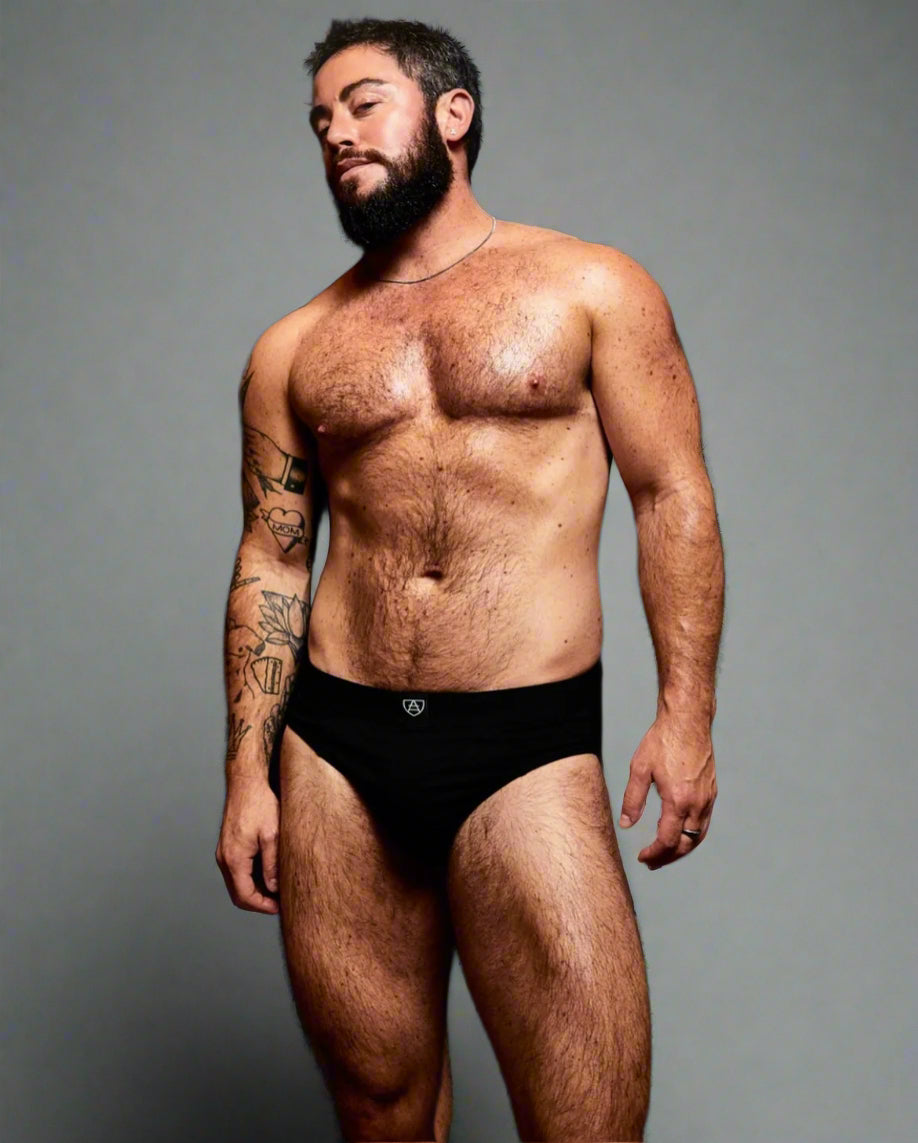More Than A Rainbow: 27 LGBTQIA+ Pride Flags And What They Mean
With in-person Pride back on the agenda for many this year, lots of flags will be coming back out of the closet. A pride flag can be a powerful symbol and celebration of identity – but with so many it can be difficult to keep track. Never fear though, we’ve put together this handy guide organising the flags by colour (plus the stories behind them) so whether you’re partying, protesting, or watching from the sidelines at Pride this year, you’ll know what good company you’ll be in.
How to identify flags with this guide: All the rainbow flag variants are together at the top, and after that the flags are organised by the colour of the top stripe, so take note of that and look it up in the guide below.
Rainbow
This one’s easy. Most people are familiar with the Gay Pride rainbow flags. But did you know there’s more than one variant? Check them out:
Gay Pride Classic 8-Stripe Rainbow: The Gilbert Baker
Gay activist and artist Gilbert Baker designed the original 8 striped rainbow flag in 1977 as an alternative to the pink triangle often used, which comes from the holocaust. Each stripe has an individual meaning important to the gay community: sexuality, life, healing, sunlight, nature, magic, serenity, and spirit.
Gay Pride 6 Stripes Rainbow
The hot pink and turquoise stripes were eventually removed from the rainbow flag, both for different, practical reasons. Hot-pink fabric was hard to find and when the flag became too popular to support production, the colour was removed. Turquoise was removed because with the 7 stripes, when hung from street lights in San Francisco the middle stripe was hidden by the posts. The 6 stripe version has remained popular to this day.
You can read more about Gilbert Baker and his visions for the flag here.
Gay Pride 6 Stripes Rainbow + Black + Brown: Philadelphia Pride
This variant of the flag was introduced by the City of Philadelphia in 2017. The black and brown stripes represent BIPOC members of the LGBTQIA+ community and has been adopted by many other places since.
6 Stripes Rainbow + Triangle of White, Pink, Blue, Brown, Black: Progress Pride Flag
In June 2018, graphic designer Daniel Quasar used crowd-funding platform Kickstarter to create his redesign of the Pride flag which he named the “Progress” Pride Flag. The colours of the rainbow keep their original meaning, while colours of the triangle represent trans people, marginalised communities, and victims of AIDS.
The positioning of the triangle is also laden with meaning. The arrow pointing to the right represents forward movement towards a better future, while the position of the arrow on the left edge shows how much progress still needs to be made.
You can read more about the Progress Pride Flag here.
Orange
Community Lesbian Pride Flag
The Community Lesbian Flag was designed in 2018 by Australian lesbian artist Emily Gwen. It was intended to represent all lesbians, including trans lesbians, non-binary lesbians, or lesbians using pronouns other than she/her.
The colours of the original 7-stripe flag have their individual meanings of gender non-conformity, independence, community, unique relationships to womanhood, serenity and peace, love and sex, and femininity.
The flag has also been adapted as a 5-stripe variant.
You can read more about Emily Gwen and support her here.
Aro-ace Pride Flag
There are many combined aromantic and asexual flag designs, but some aroace people see it as one whole identity and use the orange and blue aroace flag to reflect that. It was designed in collaboration with the aroace community by Tumblr user Aroesflags in 2018.
The orange stripe represents community, the colour chosen because on the colour wheel it is between purple (associated with the asexuality) and green (associated with aromanticism.)
The yellow stripe represents love and relationships outside of the conventional.
The white stripes represent wholeness, for aroaces who are not seeking a committed partnership of any kind.
And the blue stripes represent the spectrum of aroace identities and experiences, as like orange, it is a midpoint between purple and green.
You can read more about the designing of the aroace flag here.
Yellow
Nonbinary Pride Flag
The nonbinary flag was created in 2014 by Kye Rowan, who was 17 at the time. It was created in response to a feeling within the nonbinary community that the already existing genderqueer flag didn’t represent them properly.
Yellow represents genders outside of the binary.
White represents people who identify with multiple genders, as white can be interpreted as a mix of all colours
Purple represents people who feel their gender is a mix of masculine and feminine, as purple is a mix of blue and pink.
Black represents agender individuals, as black is an absence of light or colour.
Intersex Pride Flag
The intersex flag was designed in 2013 by Morgan Carpenter and posted on the Intersex Human Rights Australia website. It was purposefully designed to be unique and not derivative of any of the existing pride flags.
The yellow and purple colour scheme was chosen as they are both colours not associated as clearly with masculinity or femininity as other colours. The circle represents wholeness and completeness, and the fight for intersex people to be allowed their bodily autonomy.
 You can read more about Intersex Human Rights Australia here.
You can read more about Intersex Human Rights Australia here.
Green
Greyromantic/grey-aromantic Pride Flag
The greyromantic flag was based on the greysexual flag (see under Purple) but the purple associated with asexuality was replaced with the green associated with aromanticism.

MLM / Vincian Pride Flag
This flag was designed in 2019 by Tumblr user gayflagblog with input from the community into the meanings of the stripes. The meaning of the stripes in order are community, healing, joy, gender non-conforming & nonbinary & trans men, pure love, fortitude, and diversity.
The blue and green colour scheme also reflect nature, emphasising how love between men is natural and beautiful.
Aromantic Pride Flag
The aromantic flag was designed by Tumblr user cameronwhimsy. It borrows elements from older aromantic flags, especially the use of green, which was chosen because it is the opposite of red, a colour often associated with romantic love.
The green stripes represent the aromantic spectrum.
The white represents the importance of non-romantic love and friendship.
The black and grey represents the spectrum of sexuality and diversity in the aromantic community.
Blue
Transgender Pride Flag
The transgender pride flag was designed in 1999 by Monica Helms, and she first brought it to a pride parade in 2000. Since then it has been widely adopted and there are many variants available with combined venus and mars signs added.
The blue stripes represent baby boys, the pink stripes baby girls, and the white is for people who are transitioning or consider their gender neutral.
The symmetrical nature of the flag was intended so that no matter which way it is hung, it will always be correct, representing to how trans people will always be valid and find their correct centre.

Polyamorous Pride Flag
The polyamorous flag was designed in 1995 by Jim Evans.
The blue stripe stands for honesty among all partners.
The red stripe represents love and passion.
The black stripe represents those who have to hide their polyamorous relationships.
In the centre is the symbol for pi, because pi is an infinitely long number and so it represents polyamorous people having infinite love.
Purple
Greysexual Pride Flag
The greysexual flag was designed in 2013 by Milith Rusignuolo. It borrows colours and meanings from the already existing asexual flag (see under Black.)
The purple represents asexuality, and the shift to grey to white to back again represents the experience of infrequently experiencing sexual attraction, as white on the original asexual flag stands for sexual attraction.
Genderqueer Pride Flag
The genderqueer flag design was finalised in 2011 by Marilyn Roxie.
Lavender is a colour traditionally associated with queerness (due to references to Sappho) and is always a mix of blue and pink, so in the flag it represents the mix of masculine and feminine in some genderqueer people.
The white stripe represents individuals who don’t have a gender.
The dark green stripe is the inverse of the lavender colour and represents people outside the binary.
Pink
Genderflux Pride Flag
The stripes of the genderflux flag represent the different genders someone who is genderflux might move through. Dark pink for women, light pink for demigirls, grey for agender, light blue for demiboys, dark blue for men, and yellow for non-binary genders.
Bisexual Pride Flag
The bisexual pride flag was designed in 1998 by a team of activists led by Michael Page. He wanted to create a symbol for the bisexual community comparable to the rainbow pride flag for the wider LGBTQIA+ community.
He used the colours from an existing symbol, the ‘biangles’ where pink represents same-sex attraction and blue represents different-sex attraction. The purple is a blend of the two, and the way it blends in with the other two colours represents how bisexual people can be erased in both gay/lesbian and straight communities.
Genderfluid Pride Flag
The genderfluid flag was designed in 2012 by JJ Poole. Similarly to the genderflux flag, the different colours represent different genders someone might move through – pink is femininity, blue is masculinity, purple is both, black is a lack of gender, and white is all genders.
Polysexual Pride Flag
The polysexual flag was designed in 2012 by Tumblr user Samlin. The similarity to the pan and bi flags was intentional, to show their similarity as multisexual identities.
The pink stripe represents attraction to women.
The green stripe represents attraction to non-binary people.
The blue stripe represents attraction to men.
Pansexual Pride Flag
The pansexual flag was designed in 2010. The pink represents attraction to women, the yellow represents attraction to nonbinary people, and the blue represents attraction to men.
Grey
Demiboy Pride Flag
The demiboy flag was designed in 2015 by Tumblr user Transrants, but there are no confirmed colour meanings.
Demigirl Pride Flag
The demigirl flag was also designed in 2015 by Tumblr user Transrants and similarly doesn’t have any confirmed meanings for the colours.
Black
Agender Pride Flag
The agender flag was designed in 2014 by Tumblr user Transrants (who also designed the demiboy and demigirl flags above.)
Black represents the absence of gender.
Grey represents partial gender.
Green represents being non-binary, and was chosen because green is the opposite of purple (which is a combination of pink and blue.)
You can read more about being Agender here.
Asexual Pride Flag
In 2010, AVEN (a large online network for asexuals) held a competition to decide on a flag for the asexual community. The winning design was by AVEN user Standup and borrowed elements from the colour scheme of the AVEN website and existing symbols.
The black, grey, and white was based on the gradient of the AVEN triangle symbol, and represents asexuality being a spectrum. The black is asexuality, grey is grey-aces and demi-aces, and white is allosexuals (people who do experience sexual attraction.)
Purple represents community, and is based on the purple of the AVEN website.
The AVEN website took its colour scheme from amethyst gems, based on a Classical myth that amethysts could protect you from intoxication.
You can read more about AVEN here.
Read more cool (and queer!) Classical myths here.
Leather / BDSM Kink Pride Flag
The Leather/BDSM kink pride flag was designed in 1989 by Tony DeBlase and presented at International Mister Leather, an American convention for leathermen.
Regardless of opinions on whether or not kink should be celebrated at Pride, the reality is this flag is commonly seen at Pride and been used by queer members of the BDSM community for a long time, which is why it is included here.
White
Demisexual Pride Flag
It’s not known who created the demisexual flag or when, but the colours come from the asexual flag (see under Black.)
Demiromantic Pride Flag
Similarly to the demisexual flag above, it’s not clear when the demiromantic flag was created or who did it, but it takes its colours from the aromantic flag.

Brown
International Bear Brotherhood Flag
The Bear flag was created in 1995 by Craig Byrnes who researched in depth about the community before presenting some proposed flag designs to a Chesapeake Bay Bears event where the crowd voted for their favourite design. The same design that won is still in use as the International Bear Brotherhood Flag today.
Don’t forget to sign up to our newsletter to hear all about what Paxsies will be doing during Pride month, read all our new blog posts, and get a 10% off coupon for all items!












